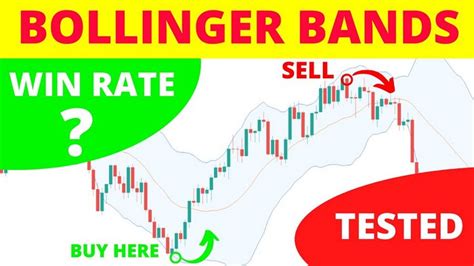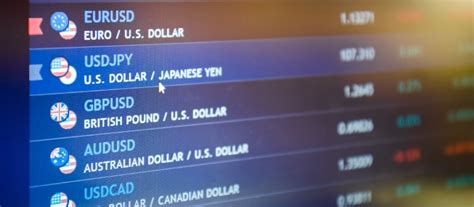Forex scalping is a popular strategy among traders seeking to make quick profits from small price movements in the market. Playing forex scalp involves executing rapid trades, typically on shorter timeframes, with the aim of capturing small, frequent gains. Unlike longer-term strategies, such as swing or position trading, scalping requires a keen eye for market conditions, precise timing, and a solid understanding of technical indicators. By focusing on forex scalping techniques and understanding how to effectively use daily charts, traders can develop strategies that help minimize risks while maximizing potential returns.
Forex Scalping Strategies
The forex market offers a variety of strategies, with forex scalping being one of the most widely used methods for traders looking to make quick profits from minor price movements. To successfully play forex scalp, it is crucial to use specific strategies that take advantage of short-term market fluctuations. By focusing on short timeframes and applying effective risk management techniques, traders can increase their chances of making profitable trades while minimizing potential losses.
1. Scalping with Moving Averages
Scalping can be enhanced by using Moving Averages, a popular technical indicator for identifying market trends. Here’s how to use them effectively in your scalping strategy:
Simple Moving Average (SMA): A basic form of moving average that can help traders identify short-term trends.
Exponential Moving Average (EMA): Provides more weight to recent price action, offering a more responsive trend-following approach.
Combining Multiple MAs: Use a combination of short-term (e.g., 5 or 10 periods) and long-term (e.g., 50 periods) moving averages to detect crossovers as entry or exit signals.
Setting the Right Time Frame: On a 1-minute or 5-minute chart, shorter MAs like the 5-period EMA work best to catch quick scalps.
2. Scalping with RSI (Relative Strength Index)
RSI is a powerful indicator for determining whether a currency pair is overbought or oversold, helping traders predict potential reversals. Here's how to integrate RSI into your scalp trading strategy:
RSI Basics: Values above 70 suggest overbought conditions, while values below 30 indicate oversold conditions.
Setting Overbought/Oversold Levels: Adjust these levels to 80/20 for more reliable signals.
Divergence Strategy: Look for divergence between price action and RSI to spot potential reversals.
Confirming with Price Action: Use candlestick patterns or other indicators like MACD to validate RSI signals.
Best Time Frames: Using RSI on 1-minute and 5-minute charts increases the chances of getting quicker, actionable signals.

3. Scalping Using Bollinger Bands
Bollinger Bands are another effective tool for scalping, as they provide insight into market volatility. Here's how you can apply this strategy:
Band Squeeze: A Bollinger Band squeeze occurs when the bands narrow, indicating low volatility and a potential breakout opportunity.
Scalping the Breakout: When the price moves outside the bands, especially on a 15-minute or 5-minute chart, it may signal a good entry point.
Band Bounce: A price that moves towards the lower band can indicate oversold conditions, while approaching the upper band suggests overbought conditions.
4. Effective Risk Management for Scalpers
Managing risk effectively is key to long-term success in forex scalping. Here are essential risk management strategies for scalpers:
Stop-Loss Orders: Setting tight stop-loss orders helps limit potential losses in quick, volatile markets.
Take-Profit Levels: Set small but consistent take-profit targets, ideally aiming for a risk-reward ratio of 1:1 or higher.
Position Sizing: Adjust your position size according to your risk tolerance, with smaller trades allowing for greater frequency.
Market Conditions: Scalping in markets with high volatility and liquidity, such as EUR/USD, typically provides better opportunities for successful trades.
5. The Impact of Market Conditions on Scalping
Market conditions play a significant role in the success of any scalp trading strategy. Understanding and adapting to market volatility and liquidity can dramatically improve scalping outcomes:
High Liquidity Pairs: Pairs like EUR/USD, GBP/USD, and USD/JPY are ideal for scalping due to their high liquidity, ensuring that your trades are executed swiftly without significant slippage.
Low Spread: The spread is crucial for scalpers, as tight spreads allow for quicker profits on small price movements.
Volatile Market Conditions: Volatility can work in favor of scalpers when price movements are fast and frequent. However, in highly volatile conditions, traders should be cautious and adjust their stop-loss levels accordingly.
Economic News Events: Be mindful of economic news releases that can cause significant volatility, which can either enhance or hinder scalping opportunities.
Time of Day: Liquidity and volatility typically peak during the London and New York trading sessions, making them the best times to scalp.
Market Sentiment: Understanding the broader market sentiment helps in identifying the right moments to enter and exit trades, particularly when combined with indicators like MACD or RSI.
Risk Management in Forex Scalping
In forex scalping, proper risk management is essential for success. Scalp traders aim to capitalize on small price movements, so maintaining control over risk is vital. With tight stop-loss levels and effective position sizing, traders can minimize losses while maximizing profits.

1. Stop-Loss Orders for Scalping
A stop-loss order is a key tool for controlling risk in scalping. By setting a stop-loss, traders can limit potential losses on each trade.
Tight Stop-Loss for Scalping: Scalpers typically use tight stop-loss orders to limit loss exposure due to the rapid nature of price movements.
Setting Stop-Loss Based on Volatility: For currency pairs like EUR/USD, adjust stop-loss levels based on market volatility. In highly volatile conditions, slightly wider stop-loss levels may be necessary.
Adjusting Stop-Loss with Market Conditions: Monitor spreads and liquidity. In less liquid markets, such as during off-hours, widen your stop-loss to avoid being prematurely stopped out.
Trailing Stop-Loss: A trailing stop allows traders to lock in profits while still providing room for price fluctuations.
Stop-Loss Management in MetaTrader Platforms: Using MetaTrader 4 or MetaTrader 5, setting and adjusting stop-loss levels can be automated to enhance precision.
2. Position Sizing for Risk Control
Position sizing is crucial to ensure that no single trade significantly impacts your overall portfolio. Here's how to effectively manage position size:
Risk Percentage: Limit each trade to a small percentage of your total capital (e.g., 1% risk per trade).
Account Balance Consideration: Adjust position size based on your account balance and the lot size for your chosen currency pair.
Lot Size Calculation: Use a lot size calculator to determine the correct lot size based on stop-loss levels and risk tolerance.
Avoid Overleveraging: High leverage may be tempting, but it increases risk exposure. Always maintain a reasonable leverage ratio.
3. Take-Profit Orders and Risk-Reward Ratios
Setting a take-profit order is essential for locking in gains. Additionally, the risk-reward ratio plays a significant role in assessing whether a trade is worth entering.
Defining Take-Profit Levels: Scalpers often set take-profit levels in small increments, such as 5-10 pips, depending on the pair being traded.
Setting Realistic Targets: For currency pairs like GBP/USD, aim for targets based on market volatility and historical price movements.
Risk-Reward Ratio: A 1:1 ratio means you risk one pip to make one pip. Many scalpers aim for a 2:1 or 3:1 risk-reward ratio, adjusting stop-loss and take-profit targets accordingly.
Incorporating Market Conditions: If trading during a period of low liquidity, lower the take-profit target to avoid being caught in unexpected price moves.
Risk-Reward Ratio and Scalping Strategies: Scalpers often prefer high-probability setups, where the risk-reward ratio exceeds 1:1.
Calculating Risk-Reward on Trading Platforms: Use TradingView or MetaTrader to calculate and visualize the risk-reward ratio directly on your chart.
4. Managing Slippage in Scalping
Slippage can significantly impact the outcomes of a scalp trade. Here's how to minimize slippage and keep it within manageable levels:
Choose Liquid Pairs: Trade highly liquid currency pairs such as EUR/USD and USD/JPY to reduce slippage risk.
Trade During Active Sessions: Scalping during peak market hours, such as the London and New York sessions, helps ensure better liquidity and tighter spreads.
Use a Reliable Forex Broker: Partnering with brokers like Pepperstone or IC Markets, known for their low spreads, can minimize slippage during quick executions.
5. Managing Volatility in Scalping
Understanding market volatility and adjusting your strategy accordingly is crucial for forex scalpers. Here's how volatility impacts your trades:
Volatility Indicators: Use tools like the Average True Range (ATR) to measure market volatility. This will help adjust your stop-loss and take-profit orders.
Trade During Low Volatility: To avoid unexpected price jumps, trade during periods of low volatility or range-bound markets.
Avoid News Trading: News events can create high volatility, making scalping more risky. It's best to avoid trading during major economic announcements.
Volatility and Liquidity Correlation: High volatility can lead to wider spreads and low liquidity, which is unfavorable for scalping. Adjust position size to account for this.
Proper risk management is integral to successful forex scalping. By combining tight stop-loss orders, optimal position sizing, and well-defined take-profit levels, traders can navigate the fast-paced world of scalping with greater confidence. Moreover, understanding how to manage slippage and market volatility allows for more precise control over risk, helping traders maximize their profitability while minimizing potential losses.
Understanding Market Conditions for Forex Scalping
Understanding market conditions is critical for effective forex scalping. A scalper needs to evaluate volatility, liquidity, and the spread of currency pairs to make fast, precise trades. The ability to recognize ideal market conditions ensures better trade entries and exits, helping traders maximize profits.
1. Market Volatility in Forex Scalping
Volatility is the degree of price movement within a given timeframe, and it's a key factor to consider for scalpers. High volatility can present both opportunities and risks.
Volatile Markets and Scalping: High volatility can lead to rapid price movements, ideal for scalping strategies. Traders may use technical indicators like Bollinger Bands or RSI to spot potential breakouts.
Low Volatility Scalping: Low volatility offers steadier movements, potentially providing smaller, more consistent profits but fewer opportunities.
Volatility and Currency Pairs: Scalpers often focus on currency pairs like EUR/USD and GBP/USD during high-volatility periods to capture fast price shifts.
Managing Risk in Volatile Markets: In highly volatile conditions, it is crucial to set appropriate stop-loss and take-profit levels. Tight stop-loss orders help mitigate unexpected market reversals.
2. Liquidity and Scalping
Liquidity refers to the ability to buy or sell a currency pair without causing significant price changes.
High Liquidity Pairs: Pairs like USD/JPY and EUR/USD are highly liquid, making them more favorable for scalping.
Trading During Major Sessions: Scalpers prefer trading during London and New York sessions, where liquidity is at its highest.
Low Liquidity and Spreads: In periods of low liquidity, such as during holidays or off-market hours, spreads widen, which can eat into a trader's profits.
3. Spreads and Scalping
The spread is the difference between the bid and ask price of a currency pair. A smaller spread is favorable for scalpers who rely on quick trades.
Tight Spreads for Scalping: Scalpers often choose brokers like IC Markets and Pepperstone for their low spreads, which minimize trading costs.
Impact of Spread on Profitability: Even a slight increase in spread can significantly affect scalping profitability, as the potential profit is usually small.
Adjusting Strategy Based on Spread: When trading pairs with wider spreads, scalpers may adjust their profit targets to ensure a positive risk-reward ratio.

4. Trading During Active Market Conditions
Timing is crucial in scalping. Trading during the right market conditions ensures that liquidity is high, spreads are narrow, and volatility presents opportunities.
Best Time to Trade: The overlap between the London and New York sessions offers the best conditions for scalping, especially in pairs like EUR/USD and GBP/USD.
Risk of Overtrading: Even in ideal conditions, excessive trading can increase risk exposure. It’s important to balance trade frequency with market conditions.
5. The Role of Time Frames in Scalping
Scalpers use short time frames (like 1 minute and 5 minutes) to spot entry and exit points quickly. The time frame affects how traders read market conditions.
1-Minute Chart Scalping: For fast price movements, the 1-minute chart is often preferred, allowing scalpers to spot small price fluctuations.
5-Minute Chart Scalping: The 5-minute chart offers a broader view of the market, allowing for slightly longer trades with a better risk-reward ratio.
Adapting Time Frames to Market Conditions: When volatility spikes, scalpers may adjust their time frame to capture larger price movements, while during stable conditions, they stick to tighter time frames.
6. Optimal Market Conditions for Scalping
| Market Condition | Ideal for Scalping? | Recommended Currency Pairs | Best Time to Trade | Key Indicators |
|---|---|---|---|---|
| High Volatility | Yes | EUR/USD, GBP/USD, USD/JPY | London-New York overlap | Bollinger Bands, RSI, MACD |
| Low Volatility | Moderate | EUR/GBP, AUD/USD | Low-volume periods | Moving Average, Stochastic Oscillator |
| High Liquidity | Yes | EUR/USD, USD/JPY | London-New York overlap | Parabolic SAR, ADX |
| Narrow Spread | Yes | EUR/USD, GBP/USD | Active trading hours | Fibonacci Retracement, RSI |
Understanding market conditions is fundamental for forex scalping. Whether dealing with volatility, liquidity, or spreads, assessing these factors helps traders select the right currency pairs and execute trades at the best possible times. By aligning strategy with market dynamics, scalpers can improve their chances of profitable trades and reduce risks associated with unfavorable market conditions.
Top Forex Brokers and Platforms for Scalping
Choosing the right forex broker and trading platform is essential for successful scalping. A broker offering low spreads, high liquidity, and fast execution speeds can make a significant difference in scalping performance.
1. Best Forex Brokers for Scalping
A reliable forex broker can directly impact your success in forex scalping. Scalpers need brokers that offer low spreads, minimal slippage, and high execution speed.
IC Markets
Spreads: As low as 0.0 pips
Execution Speed: Less than 1 millisecond
Platforms: MetaTrader 4, MetaTrader 5, cTrader
Regulation: ASIC (Australia)
Liquidity: Excellent for scalping
Pepperstone
Spreads: From 0.0 pips
Execution Speed: Very fast with low latency
Platforms: MetaTrader 4, MetaTrader 5, cTrader
Regulation: FCA (UK), ASIC (Australia)
Liquidity: High liquidity for major pairs like EUR/USD, USD/JPY.
FP Markets
Spreads: From 0.0 pips
Execution Speed: Ultra-low latency
Platforms: MetaTrader 4, MetaTrader 5
Regulation: ASIC (Australia)
Liquidity: Deep liquidity, ideal for EUR/USD and GBP/USD scalping.
FBS
Spreads: Tight spreads from 0.0 pips
Execution Speed: Fast execution with minimal delay
Platforms: MetaTrader 4, MetaTrader 5
Regulation: IFSC (Belize)
Liquidity: Suitable for both volatile and liquid pairs.
XM
Spreads: From 0.0 pips
Execution Speed: Very low latency
Platforms: MetaTrader 4, MetaTrader 5
Regulation: FCA (UK), ASIC (Australia)
Liquidity: Excellent for popular pairs like EUR/USD.
2. Top Trading Platforms for Forex Scalping
The choice of trading platform is critical for scalpers because it affects trade execution time, available tools, and overall usability. Here are the top forex platforms for scalping:
MetaTrader 4 (MT4)
Popular for its wide use and extensive plugin support
Best for: Automated scalping, running expert advisors (EAs)
Technical Indicators: Supports RSI, Bollinger Bands, Fibonacci Retracement
Features: Fast execution, one-click trading
MetaTrader 5 (MT5)
Advanced version of MT4, offers more time frames, extra chart types, and more indicators
Best for: Trading EUR/USD, GBP/USD, and USD/JPY
Technical Indicators: Moving averages, ADX, Stochastic Oscillator
Features: Multiple order types, in-depth market analysis
cTrader
Known for its clean interface and fast order execution
Best for: Active scalping strategies, low latency trading
Technical Indicators: MACD, RSI, Moving Average
Features: Level II pricing, advanced charting tools
TradingView
Excellent for market analysis, charting, and live social trading
Best for: Visual traders looking to incorporate chart patterns and technical analysis
Technical Indicators: All major indicators, including custom-made ones
Features: Cloud-based, intuitive user interface for both manual and automated trading
3. Key Features for Scalpers to Look for in Forex Brokers
For successful scalping, brokers and platforms must offer specific features that make rapid trades possible and cost-effective.
Low Spreads
Scalping thrives in environments where spreads are narrow. Brokers like Pepperstone and IC Markets offer ultra-low spreads for EUR/USD and GBP/USD.Fast Execution Speed
Fast order execution reduces slippage, which is crucial for scalpers. FP Markets and FBS offer sub-second execution speeds.High Liquidity
Liquidity ensures that your orders are filled at the desired price. Brokers with high liquidity such as Pepperstone are ideal for executing large scalping orders without causing price slippage.No Requotes
Scalpers require immediate order fulfillment. Brokers like XM ensure that no requotes are given, which can be a problem during volatile market conditions.Customizable Platforms
The ability to add custom indicators and features on MetaTrader 4 or cTrader allows scalpers to tailor their setup to their trading style and risk tolerance.
4. Comparing Forex Brokers for Scalping
Here is a comparison table summarizing the features of the top forex brokers for scalping:
| Broker | Spreads | Execution Speed | Platform | Regulation | Liquidity | Best for |
|---|---|---|---|---|---|---|
| IC Markets | 0.0 pips | <1 millisecond | MetaTrader 4, MetaTrader 5, cTrader | ASIC (Australia) | Excellent for major pairs | EUR/USD, USD/JPY |
| Pepperstone | 0.0 pips | Fast with low latency | MetaTrader 4, MetaTrader 5, cTrader | FCA (UK), ASIC (Australia) | High liquidity for major pairs | GBP/USD, EUR/USD |
| FP Markets | 0.0 pips | Ultra-low latency | MetaTrader 4, MetaTrader 5 | ASIC (Australia) | Deep liquidity for EUR/USD | EUR/USD, GBP/USD |
| FBS | 0.0 pips | Fast execution | MetaTrader 4, MetaTrader 5 | IFSC (Belize) | Suitable for both volatile and liquid pairs | EUR/USD, USD/JPY |
| XM | 0.0 pips | Low latency | MetaTrader 4, MetaTrader 5 | FCA (UK), ASIC (Australia) | Excellent liquidity | EUR/USD, GBP/USD |
Selecting the best forex broker and trading platform is fundamental for scalping success. Brokers like IC Markets and Pepperstone are excellent choices, while MetaTrader 4 and cTrader provide the necessary tools for fast execution. Always choose platforms with low spreads, high liquidity, and fast execution speeds to optimize your scalping strategy.
Effective Currency Pairs for Forex Scalping
In forex scalping, choosing the right currency pairs is crucial for maximizing profits. Scalpers need pairs with high volatility, low spreads, and substantial liquidity.

1. Best Currency Pairs for Forex Scalping
Scalping thrives on quick, small profits, and some currency pairs are better suited for this due to their volatility and liquidity.
EUR/USD
Why it’s ideal: It’s the most liquid currency pair with low spreads, offering multiple trading opportunities.
Key advantage: Consistently narrow spreads and strong market depth.
Best for: Quick trades using RSI or MACD.
GBP/USD
Why it’s ideal: Known for its volatility, the GBP/USD offers significant price movement within short time frames.
Key advantage: Ideal for high-frequency scalping, often seeing sharp moves in minutes.
Best for: Quick scalping using Bollinger Bands and Moving Averages.
USD/JPY
Why it’s ideal: USD/JPY offers fast execution and liquidity. It is less volatile than GBP/USD but still provides profitable moves for scalpers.
Key advantage: Stable price action with enough volatility for scalping.
Best for: High-speed scalping in 1-minute or 5-minute time frames.
AUD/USD
Why it’s ideal: AUD/USD offers great liquidity and low spreads, often moving in predictable patterns.
Key advantage: Strong correlation with commodity prices, providing good entry points.
Best for: Scalping strategies based on Fibonacci Retracement.
EUR/GBP
Why it’s ideal: Offers tight spreads and stable price action, providing opportunities for quick trades.
Key advantage: Excellent for low-risk scalping during low-volatility times.
Best for: Scalping during low-impact news events.
2. Why Some Currency Pairs Are Better for Scalping than Others
Currency pairs differ in their behavior based on liquidity, volatility, and spread. Here's why certain pairs are better suited for forex scalping:
Liquidity: The higher the liquidity of a pair, the more likely it is that your order will be filled at the desired price. High liquidity pairs like EUR/USD and GBP/USD typically have tight spreads, meaning scalpers can open and close trades without experiencing much slippage.
Volatility: Scalping thrives on volatility. The more volatile a currency pair, the higher the potential for price movement in a short period. However, too much volatility can also result in excessive risk, so a balance is needed.
Spread: A narrow spread is crucial for scalping, as traders make many small trades. Narrow spreads ensure that profits can be locked in quickly, without losing too much on each trade.
3. Comparing Currency Pairs for Scalping
Here’s a comparison of some of the most popular currency pairs for scalping based on their liquidity, volatility, and spread characteristics:
| Currency Pair | Liquidity | Volatility | Typical Spread | Best for |
|---|---|---|---|---|
| EUR/USD | High | Moderate | 0.1-0.3 pips | RSI, MACD |
| GBP/USD | High | High | 0.3-0.5 pips | Bollinger Bands, Moving Averages |
| USD/JPY | High | Low to Moderate | 0.1-0.3 pips | 1-minute and 5-minute scalping |
| AUD/USD | High | Moderate | 0.2-0.3 pips | Fibonacci Retracement |
| EUR/GBP | Moderate | Low | 0.2-0.4 pips | Low-impact news scalping |
4. How to Identify the Best Time to Trade Currency Pairs for Scalping
The best time to trade varies based on the currency pairs you choose. Here’s a quick guide on when to trade each pair for maximum scalping opportunities:
EUR/USD: Best traded during the European and US sessions, with peak liquidity from 8 AM to 12 PM EST. The tight spreads and liquidity offer the best conditions for quick scalps.
GBP/USD: The London session provides the highest volatility, especially between 9 AM and 12 PM EST. Watch for sharp price movements and capitalize on them with Bollinger Bands or MACD.
USD/JPY: Active during the Asian session (Tokyo) but remains liquid throughout the day, with less volatility compared to GBP/USD. Ideal for 1-minute trades in quieter market conditions.
AUD/USD: Best traded during the Asian and London sessions. The currency pair’s price movements often correlate with commodity price fluctuations, providing reliable signals for scalping during the London session.
EUR/GBP: Active during the London session but tends to be less volatile. Best for scalping during quieter market periods when smaller price movements are more predictable.
Choosing the right currency pair for forex scalping involves understanding its liquidity, volatility, and typical spread behavior. EUR/USD, GBP/USD, and USD/JPY remain popular among scalpers due to their high liquidity and favorable price movements. Tailor your scalping strategy to match the currency pair’s characteristics and time it well for maximum returns.
Conclusion:
Mastering forex scalping on daily charts can be an invaluable skill for traders looking to capitalize on small price fluctuations in the market. By understanding the nuances of forex scalping strategies, risk management techniques, and the role of key indicators, you can significantly improve your chances of success. Traders who focus on currency pairs with high liquidity, such as EUR/USD or GBP/USD, can further refine their strategies to achieve more consistent profits. Whether you're using MetaTrader 4, MetaTrader 5, or TradingView, the tools available today offer advanced features that make executing scalping trades easier than ever. Ultimately, the ability to quickly identify entry and exit points, paired with sound risk management, will set you apart in the fast-paced world of forex trading.





